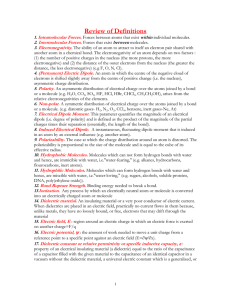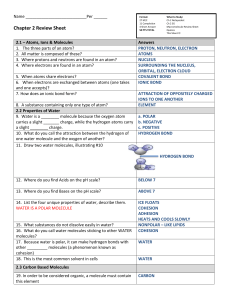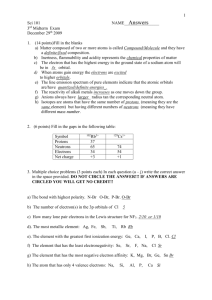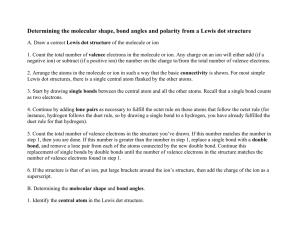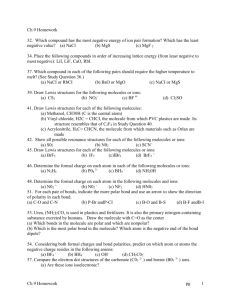Review of Definitions
advertisement
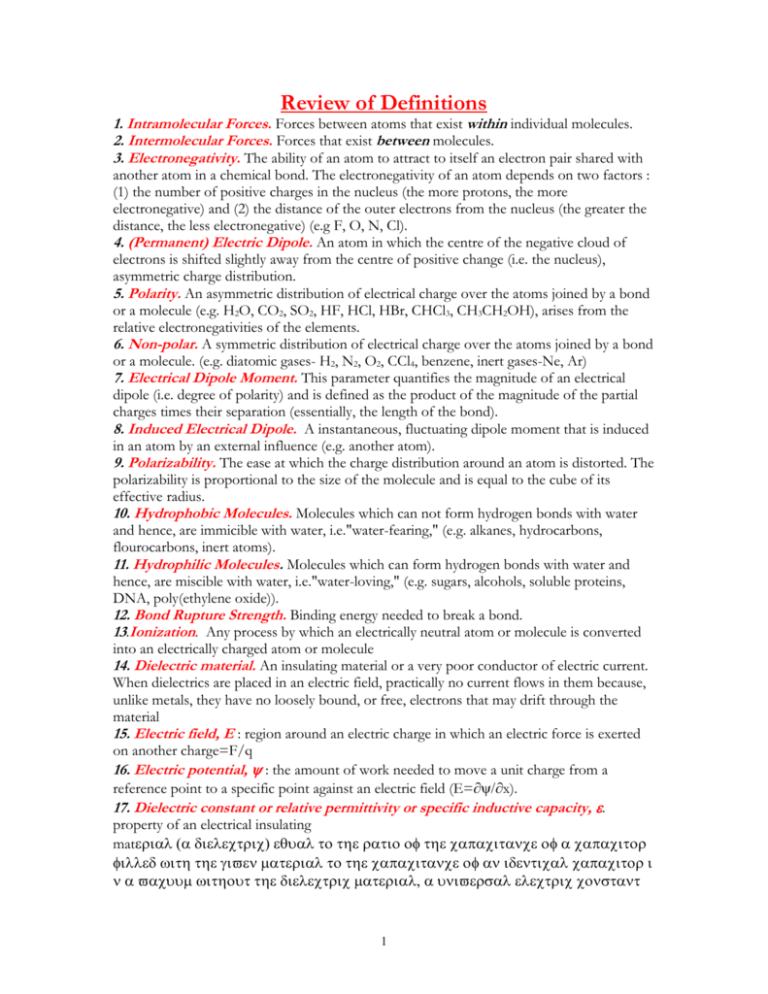
Review of Definitions 1. Intramolecular Forces. Forces between atoms that exist within individual molecules. 2. Intermolecular Forces. Forces that exist between molecules. 3. Electronegativity. The ability of an atom to attract to itself an electron pair shared with another atom in a chemical bond. The electronegativity of an atom depends on two factors : (1) the number of positive charges in the nucleus (the more protons, the more electronegative) and (2) the distance of the outer electrons from the nucleus (the greater the distance, the less electronegative) (e.g F, O, N, Cl). 4. (Permanent) Electric Dipole. An atom in which the centre of the negative cloud of electrons is shifted slightly away from the centre of positive change (i.e. the nucleus), asymmetric charge distribution. 5. Polarity. An asymmetric distribution of electrical charge over the atoms joined by a bond or a molecule (e.g. H2O, CO2, SO2, HF, HCl, HBr, CHCl3, CH3CH2OH), arises from the relative electronegativities of the elements. 6. Non-polar. A symmetric distribution of electrical charge over the atoms joined by a bond or a molecule. (e.g. diatomic gases- H2, N2, O2, CCl4, benzene, inert gases-Ne, Ar) 7. Electrical Dipole Moment. This parameter quantifies the magnitude of an electrical dipole (i.e. degree of polarity) and is defined as the product of the magnitude of the partial charges times their separation (essentially, the length of the bond). 8. Induced Electrical Dipole. A instantaneous, fluctuating dipole moment that is induced in an atom by an external influence (e.g. another atom). 9. Polarizability. The ease at which the charge distribution around an atom is distorted. The polarizability is proportional to the size of the molecule and is equal to the cube of its effective radius. 10. Hydrophobic Molecules. Molecules which can not form hydrogen bonds with water and hence, are immicible with water, i.e."water-fearing," (e.g. alkanes, hydrocarbons, flourocarbons, inert atoms). 11. Hydrophilic Molecules. Molecules which can form hydrogen bonds with water and hence, are miscible with water, i.e."water-loving," (e.g. sugars, alcohols, soluble proteins, DNA, poly(ethylene oxide)). 12. Bond Rupture Strength. Binding energy needed to break a bond. 13.Ionization. Any process by which an electrically neutral atom or molecule is converted into an electrically charged atom or molecule 14. Dielectric material. An insulating material or a very poor conductor of electric current. When dielectrics are placed in an electric field, practically no current flows in them because, unlike metals, they have no loosely bound, or free, electrons that may drift through the material 15. Electric field, E : region around an electric charge in which an electric force is exerted on another charge=F/q 16. Electric potential, : the amount of work needed to move a unit charge from a reference point to a specific point against an electric field (E=x). 17. Dielectric constant or relative permittivity or specific inductive capacity, . property of an electrical insulating mat 1 o= permittivity in free vacuum) 2

